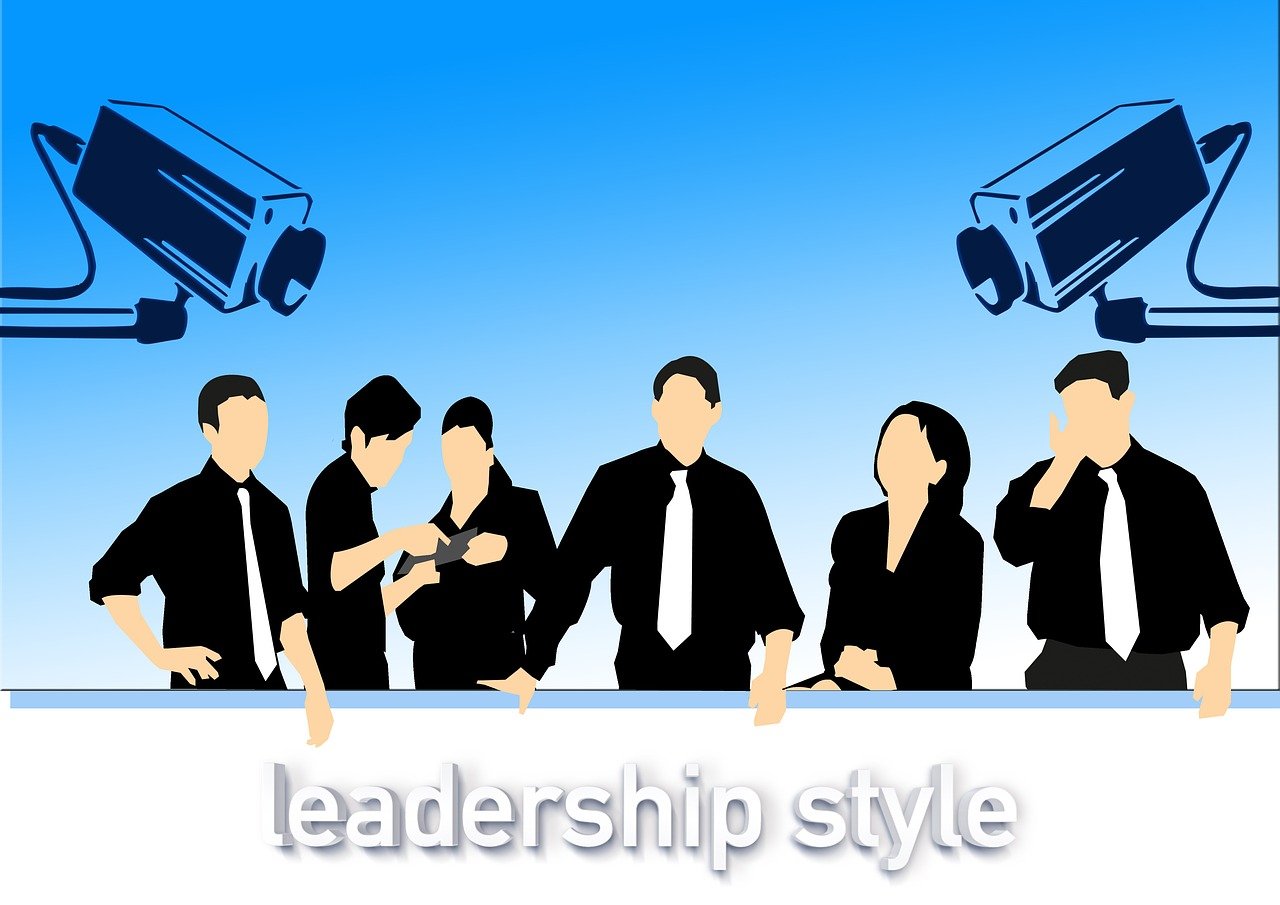In today’s rapidly evolving corporate landscape, the leadership styles of the world’s most successful CEOs provide invaluable insights into driving innovation, building resilient teams, and steering companies toward sustainable success. From tech giants like Apple, Amazon, and Microsoft to influential leaders at Tesla, Facebook, and Starbucks, the qualities of visionary thinking, adaptability, and empathy define the leaders who shape industries and inspire cultures. Their journeys reveal that leadership goes beyond mere management; it’s about cultivating a mindset that embraces challenges, fosters creativity, and prioritizes both people and purpose. Observing these leaders offers a roadmap for entrepreneurs and executives aiming to develop impactful leadership strategies that stand the test of time in the competitive market of 2025.
Visionary Leadership: How Top CEOs Inspire and Direct Their Organizations
A clear and compelling vision is the cornerstone of successful leadership. Leaders like Steve Jobs at Apple demonstrated how communicating an inspiring vision can galvanize teams and reshape markets. Jobs harnessed his passion to revolutionize user-centric technology, pushing the boundaries with products like the iPhone and iPad that not only met but redefined consumer expectations. His insistence on perfectionism and innovation created a cultural bedrock where creativity thrived and excellence was the norm.
Similarly, Satya Nadella’s leadership at Microsoft underscores the power of evolving vision. Nadella reoriented Microsoft around cloud computing and artificial intelligence, fostering a growth mindset that propelled the company into new realms of innovation and collaboration. His emphasis on curiosity, humility, and adaptability transformed the corporate culture, enabling employees to embrace change positively and work towards shared objectives in a highly competitive sector.
- Articulate a clear vision: Effective leaders communicate their goals comprehensively to ensure alignment.
- Inspire through passion: Genuine enthusiasm motivates teams to exceed expectations.
- Maintain flexibility: Willingness to pivot ensures relevance amidst market changes.
- Set high standards: Demanding excellence raises overall performance and innovation.
| CEO | Vision Focus | Key Leadership Trait | Impact Area |
|---|---|---|---|
| Steve Jobs (Apple) | User-centric innovation | Visionary & Perfectionist | Consumer Technology |
| Satya Nadella (Microsoft) | Cloud Computing & AI | Growth Mindset & Humility | Enterprise Solutions |
| Elon Musk (Tesla) | Sustainable Technology | Ambition & Hands-on Approach | Automotive & Space Exploration |
Embedding a culture that aligns with a visionary framework starts with clear communication and sustained enthusiasm. Leaders must not only set direction but also serve as exemplars of the behaviors expected in their teams. This practice fosters accountability while nurturing innovation. For example, Musk’s approach at Tesla, where he works alongside engineers on complex projects, illustrates how leading by example can inspire dedication and superior performance.
To cultivate such a visionary leadership style, individuals might explore how to foster innovation culture by visiting this dedicated resource. Embracing a dynamic vision enables companies to stay ahead in the fast-paced environments that dominate sectors like technology and automotive innovation.

Resilience and Adaptability: Mastering Change in the Modern Business World
In 2025, the pace of change in the global economy demands leaders who are not only visionary but also resilient and agile. CEOs such as Jeff Bezos of Amazon exemplify this approach. Bezos views failure not as a setback but as a learning platform, fostering a “fail fast” philosophy that cultivates innovation and endurance across his organization. This mindset has been pivotal in Amazon’s growth from an online bookstore to a global e-commerce powerhouse.
Mark Zuckerberg’s transformation of Facebook into Meta illustrates adaptability in leadership. Recognizing shifting digital landscapes, Zuckerberg pivoted the company’s focus towards developing the metaverse, demonstrating how agile thinking and a willingness to embrace the unknown secure a company’s future relevance and market leadership.
- View failure as opportunity: Learning from mistakes promotes continuous growth.
- Embrace agility: Swift adaptation to disruptions ensures organizational survival.
- Encourage experimentation: Innovation flourishes in environments where risk-taking is supported.
- Maintain optimism: Positive outlooks help teams navigate uncertainty effectively.
Building resilience requires fostering an organizational culture where employees feel supported to explore novel ideas without fear of reprisal. Companies like Netflix, under Reed Hastings, strategically balanced risk and caution, transitioning from DVD rentals to streaming—a move reflecting calculated risk-taking grounded in thorough market analysis. This balance is essential for maintaining momentum without jeopardizing corporate stability.
| CEO | Resilience Strategy | Example Initiative | Outcome |
|---|---|---|---|
| Jeff Bezos (Amazon) | Fail Fast Culture | Expansion into Cloud with AWS | Market Leadership in Cloud Services |
| Mark Zuckerberg (Facebook/Meta) | Strategic Pivoting | Metaverse Development | Emerging Digital Platforms |
| Reed Hastings (Netflix) | Balanced Risk Taking | Streaming Tech Adoption | Global Media Disruption |
Resilience also hinges on leadership emotional intelligence to guide teams through uncertain times. For enhanced insights into building resilient organizations, leaders can visit resources on resilience in business. This knowledge is vital as companies continually face global challenges from technological shifts to economic disruptions.
The Human-Centered CEO: Strategies for Prioritizing People and Culture
Successful CEOs understand that prioritizing people is fundamental for long-term profit and sustainability. Richard Branson’s philosophy at Virgin Group affirms that taking care of employees inevitably benefits customers and the bottom line. This approach nurtures a trustworthy, nurturing environment where morale and productivity flourish.
Apple’s Tim Cook extends this ethos by cultivating a culture of collaboration, emphasizing strong relationships across teams and with investors. His leadership style underscores trust as the “currency” essential to driving innovation and achieving company goals. Meanwhile, Indra Nooyi’s tenure at PepsiCo illustrated the power of empowerment, providing decision-making autonomy to her teams which sparked creativity and accountability through ownership.
- Cultivate trust-based relationships: Trust fosters loyalty and team cohesion.
- Empower employees: Giving ownership enhances innovation and engagement.
- Nurture inclusive cultures: Diversity drives creativity and market relevance.
- Lead with empathy: Understanding employees’ needs builds strong, motivated teams.
The move toward employee wellbeing is championed by leaders like Arianna Huffington, who promotes mindfulness and work-life balance as key to productivity. A healthy, balanced workforce leads to sustainable success in modern enterprises.
| CEO | People-Centric Strategy | Key Cultural Emphasis | Business Outcome |
|---|---|---|---|
| Richard Branson (Virgin Group) | People First Philosophy | Employee Care & Morale | Customer Loyalty & Profit Growth |
| Tim Cook (Apple) | Collaboration & Trust | Team Cohesion & Innovation | Market Leadership in Tech |
| Indra Nooyi (PepsiCo) | Empowerment & Ownership | Accountability & Creativity | Strategic Market Growth |
Creating such thriving cultures involves well-planned strategies, combining emotional intelligence and inclusive leadership values. For more detailed strategies on emotional intelligence in leadership roles, visit this insightful guide.

Strategic Innovation: Balancing Risk with Vision for Sustainable Growth
Innovation is the lifeblood of industry leaders such as Google and IBM, both of which continuously invest in cutting-edge technologies and sustainable solutions. Larry Page of Google exemplifies long-term focus in leadership, championing projects like self-driving cars and renewable energy to ensure the company’s relevance and impact decades ahead.
Leaders like Reed Hastings at Netflix show that combining innovation with measured risk-taking fosters both disruption and stability. Hastings’ strategic decisions allowed Netflix to transition successfully from physical DVD rentals to digital streaming, revolutionizing the entertainment industry while carefully managing risk exposure.
- Set ambitious innovation goals: Drives forward-looking growth strategies.
- Balance risk and caution: Protects corporate assets while encouraging exploration.
- Invest in technology and R&D: Ensures ongoing relevance and competitiveness.
- Collaborate through partnerships: Enhances innovation capabilities and market reach.
Building sustainable growth frameworks requires strategic planning and a willingness to pioneer new ventures. For businesses eager to scale while maintaining quality, exploring resources like scaling strategies can provide actionable pathways.
| CEO | Innovation Strategy | Risk Approach | Growth Focus |
|---|---|---|---|
| Larry Page (Google) | Long-term Innovation | Calculated Risk Taking | Future-Ready Technologies |
| Reed Hastings (Netflix) | Disruptive Innovation | Risk-Balanced Strategy | Digital Media Leadership |
| Howard Schultz (Starbucks) | Purpose-Driven Growth | Risk-Tolerant with Buffering | Global Brand Expansion |
Innovation is also intrinsically tied to corporate social responsibility (CSR), with leaders like Howard Schultz balancing profit motives with ethical and community-driven initiatives. This approach enhances brand reputation while contributing positively to society—a fundamental lesson for emerging leaders.

Ethical and Empathetic Leadership: Building Trust and Lasting Impact
The era of 2025 demands not only intelligent leadership but also ethical stewardship and compassionate management. Warren Buffett’s candid communication and value-driven leadership have earned him the unwavering trust of investors and peers alike, illustrating how transparency fosters credibility and long-term success.
Marc Benioff of Salesforce champions leading with compassion, emphasizing empathy as a driver for genuine relationships and productive workplaces. This human-centered approach creates environments where employees feel seen and valued, translating into enhanced engagement and customer satisfaction.
- Practice transparency: Builds trust between leadership and teams.
- Lead with empathy: Nurtures loyalty and motivation.
- Maintain ethical standards: Ensures sustainable and responsible decision-making.
- Encourage open communication: Fosters an inclusive, collaborative environment.
Incorporating these principles entails modeling behavior that balances business acumen with humanity—qualities that underpin lasting leadership legacies. For aspiring leaders, resources on ethical leadership offer practical guidance, accessible at the official leadership insights hub.
Leadership Lessons Quiz: CEOs Edition
Test your knowledge about leadership traits and lessons from the world’s most successful CEOs.


